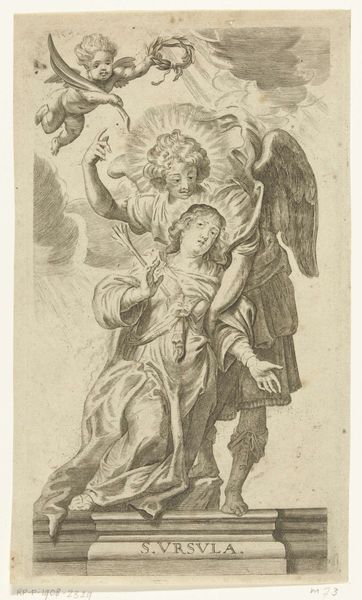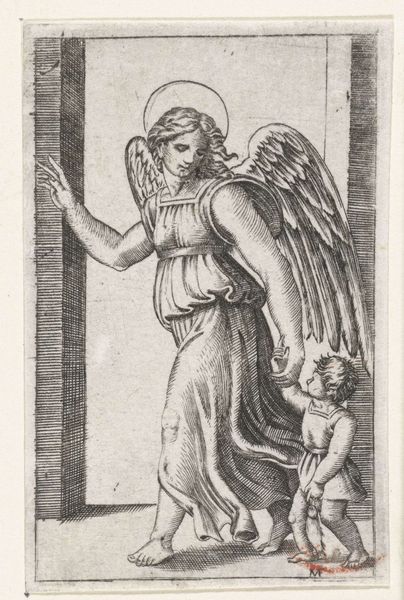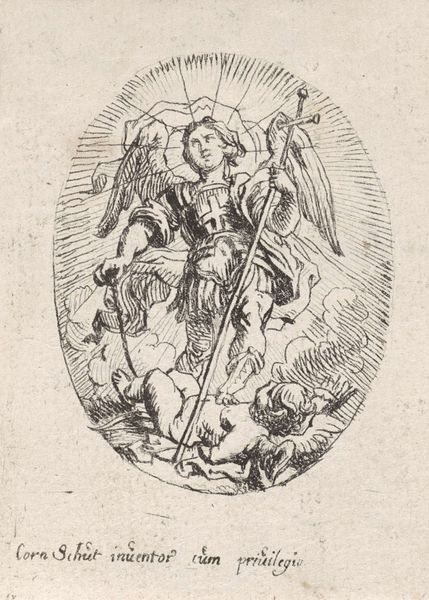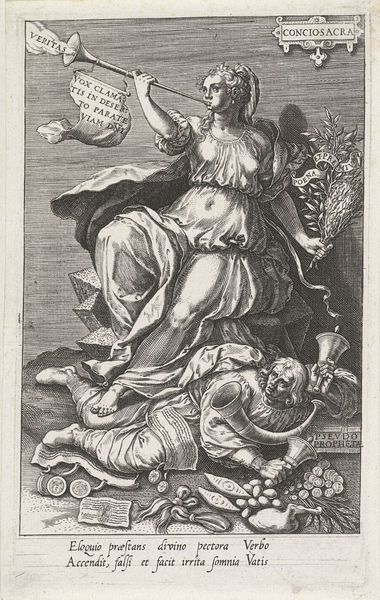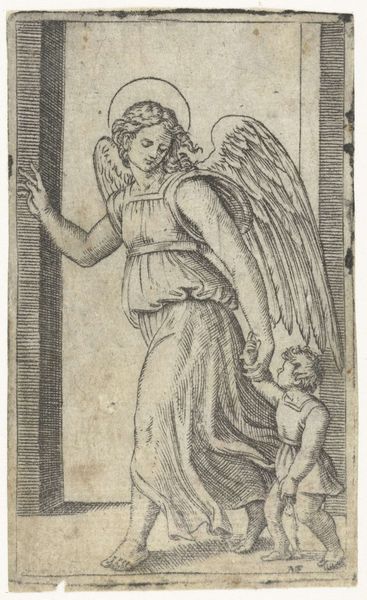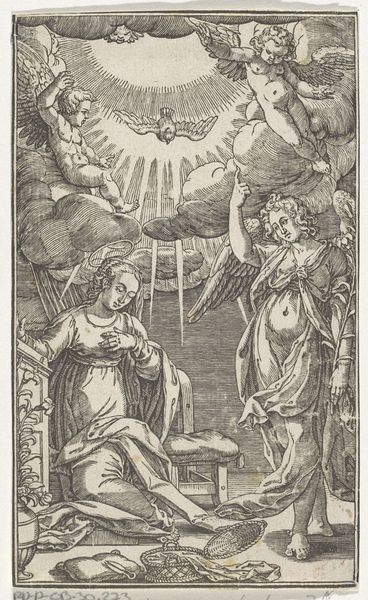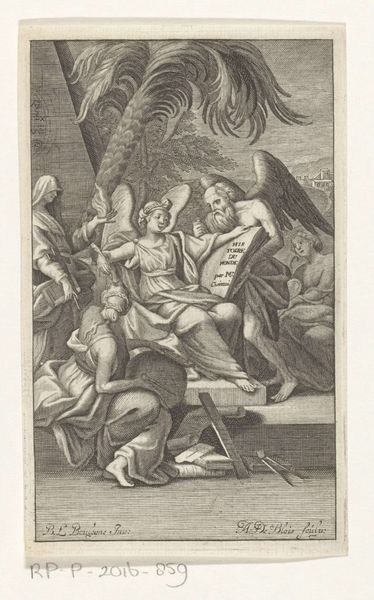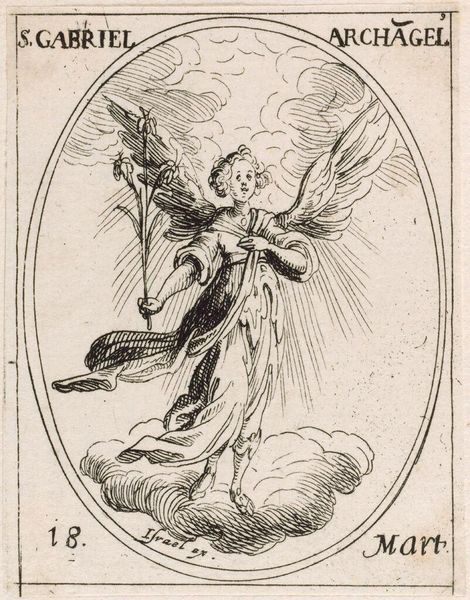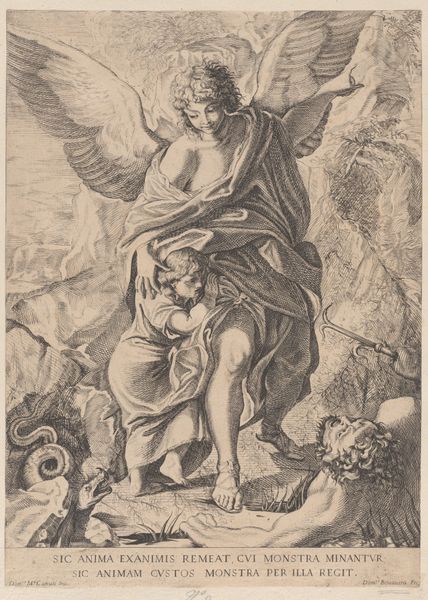
#
light pencil work
#
pen sketch
#
pencil sketch
#
cartoon sketch
#
personal sketchbook
#
ink drawing experimentation
#
pen-ink sketch
#
pen work
#
sketchbook drawing
#
sketchbook art
Dimensions: height 90 mm, width 66 mm
Copyright: Rijks Museum: Open Domain
Editor: This is H. Ursula by Franz Huybrechts, made sometime between 1656 and 1661. It appears to be a pen and ink sketch. There's a delicate quality to the lines, and a sense of movement despite the stillness of the figures. What strikes you most about it? Curator: Considering it's an ink drawing, likely intended for reproduction, I immediately think about the economics of printmaking in the 17th century. Huybrechts wasn't just making an image; he was creating a commodity, subject to market demands and reliant on the labor of the engraver. How do you think this knowledge informs our understanding of the work? Editor: That's a really interesting point. I hadn't considered the economic context. Does thinking about the labour involved make you see the image differently? Curator: Absolutely. It shifts the focus away from purely aesthetic concerns and towards the material conditions of its creation. The quality of the paper, the ink used, the skill of the engraver - these all contribute to the final product and reflect a certain level of investment and access to resources. Do you think there is symbolism present here that might have held a particular significance to a contemporary audience and influenced its commercial appeal? Editor: It is hard to imagine now but people at the time must have valued these things that much more... It’s definitely made me reconsider how I look at prints, not just as images, but as products of their time. Thank you! Curator: The dialogue between artistic vision, material reality and labor, that is really where we start understanding.
Comments
No comments
Be the first to comment and join the conversation on the ultimate creative platform.
